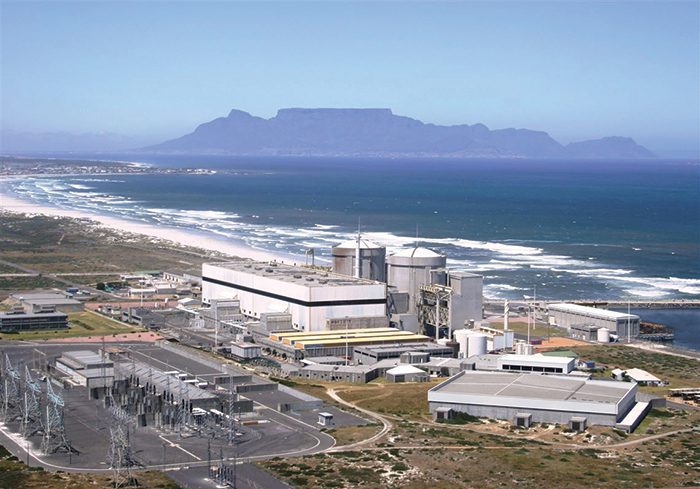Eskom, South Africa’s major utility, said the second unit of the Koeberg nuclear power plant in that country was reconnected to the national grid after a major maintenance project.
Eskom officials on Dec. 31 said the Koeberg plant, the only commercial nuclear power plant in Africa, again has about 1,860 MW of generation capacity. Eskom has worked to increase and stabilize South Africa’s electricity supply after years of power outages and load-shedding moves across the country.
Blackouts have been common in South Africa for several years. Eskom began its load-shedding program nearly two decades ago, and it reached its most-critical point in 2023, with some outages often lasting more than 12 hours. The utility this year, though, has suspended the program and provided what it calls uninterrupted power since late March. Officials have said nuclear power will be key to increasing the country’s electricity supply.
Extending Operational Life
The Koeberg plant, which has operated since 1984, is located north of Cape Town. It supplies about 5% of South Africa’s electricity. Eskom in a news release Tuesday said it brought Unit 2 back online on Monday, after “an extensive Long-Term Operation (LTO) programme designed to extend Unit 2’s operational lifespan by an additional 20 years.”

“While projects like the LTO programme necessitate a higher initial upfront investment, the long-term benefits—including decades of affordable, low-carbon energy—make them indispensable,” said Dan Marokane, Eskom’s chief executive. “Koeberg exemplifies how nuclear power can align economic and environmental priorities to create a sustainable energy future. Through the successful execution of the LTO project, our Koeberg team has once more demonstrated the exceptional skills we have to support our country’s nuclear ambitions.”
The utility in a news release Tuesday said, “The maintenance programme for Unit 2 included the replacement of three steam generators, comprehensive inspections, and refueling activities to ensure the reactor’s continued safe and efficient performance. These enhancements align with Eskom’s broader strategy to secure the future of Koeberg’s reactors, which are critical to the country’s energy security. With a 930-MW contribution, Unit 2 plays a significant role in Eskom’s goal to increase its capacity by 2,500 MW by March 2025.”
Challenges for Power Grid, Economy
Eskom’s struggles to provide reliable power have created challenges for Africa’s most-industrialized economy. Sabotage of the utility’s electrical infrastructure, along with an aging fleet of coal-fired power plants, have exacerbated the country’s energy crisis. An explosion at a large coal-fired plant in mid-December injured nine workers.
South African officials in July of this year extended the 40-year operating license of Koeberg’s Unit 1 reactor by another 20 years. An extension of the license for Unit 2 is expected sometime in 2025.
“By forming strategic collaborations with international designers, suppliers, and industry leaders, Koeberg has established itself as a hub for nuclear innovation. These partnerships are anticipated to be crucial as South Africa explores advanced nuclear technologies, such as Small Modular Reactors (SMRs). This could position the country as a leader in cutting-edge nuclear solutions while continuing to build and maintain a skilled nuclear workforce,” said Bheki Nxumalo, Eskom’s Group Executive for Generation.
“As South Africa phases out some of the aging coal-fired power plants by 2030, nuclear energy is poised to provide a reliable and stable baseload supply. Unlike intermittent renewable sources, nuclear power ensures continuous electricity generation, meeting the needs of both residential and industrial users. Its ability to produce carbon-free energy also supports South Africa’s climate goals by reducing greenhouse gas emissions,” said Nxumalo.
—Darrell Proctor is a senior editor for POWER.








